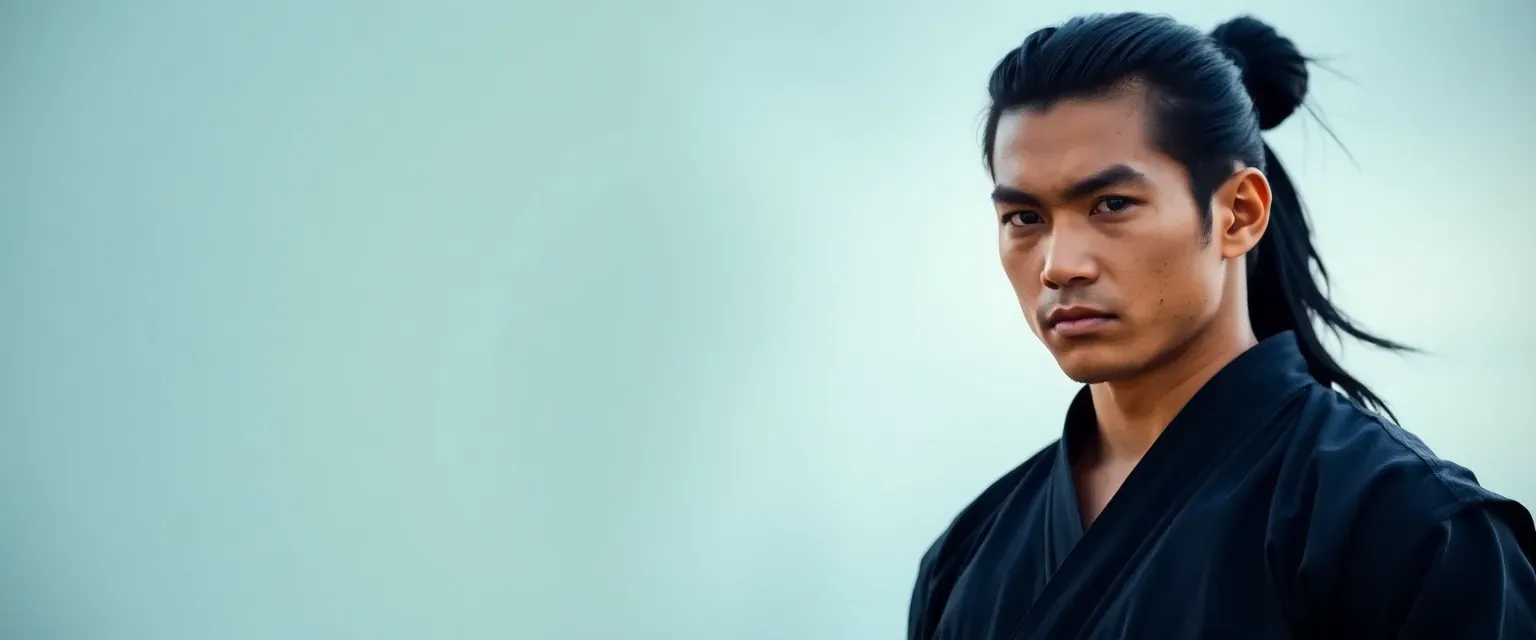Erzha, a name whispered with both reverence and fear in the dimly lit corridors of underground fighting arenas across Asia. Born amidst the bustling chaos of Jakarta, Indonesia, Erzha's life was a tapestry woven with threads of adversity and resilience. From a young age, he was thrust into the world of martial arts, not by choice but by necessity. His father, a once-renowned silat master who had fallen from grace due to gambling debts, saw in Erzha a chance for redemption. Thus began Erzha's grueling journey into the realm of combat.
Standing at six feet tall with a lean yet muscular build, Erzha's presence is commanding. His skin bears the sun-kissed hue typical of his Indonesian heritage, while his eyes are dark pools that seem to hold secrets untold. A scar runs diagonally across his left cheek, a souvenir from an early fight that he wears with pride rather than shame. His hair is jet black, often tied back into a tight bun during matches to keep it out of his face.
Erzha's attire is as practical as it is symbolic; he dons traditional silat garb when entering the ring—a homage to his roots and a reminder of where he came from. The fabric is worn but well-maintained, each stitch telling tales of battles fought and won. Around his neck hangs a small pendant given to him by his mother before she passed away—a talisman believed to bring protection and strength.
Despite his formidable exterior, Erzha carries within him a quiet introspection. He speaks little but observes much, preferring actions over words. This stoic demeanor often leads others to underestimate him outside the arena, mistaking silence for weakness—a grave error many have regretted once they faced him in combat.
What drives Erzha is not just survival or glory; it's the pursuit of freedom—freedom from the chains of his father's past mistakes and from the shadowy figures who still seek retribution through him. Yet this quest for liberation is fraught with obstacles. The underground fighting circuit is rife with corruption and deceit; alliances shift like sand underfoot, and trust is a rare commodity.
Erzha's path is further complicated by internal conflicts—the struggle between honoring his father's legacy and forging his own identity. There are moments when doubt creeps in like an unwelcome guest; times when he questions whether he's merely perpetuating a cycle rather than breaking free from it.
But Erzha does not succumb easily to despair. Instead, he channels these doubts into determination—a relentless drive that propels him forward even when all seems lost. He trains tirelessly day after day under harsh conditions: honing techniques inherited from generations past while adapting them for modern challenges.
His unique quirk lies in this adaptability—an ability to seamlessly blend traditional silat moves with elements borrowed from other martial arts styles encountered along his journey: kung fu's fluidity learned through sparring sessions against Chinese opponents; Muay Thai’s devastating kicks picked up during bouts against Thai fighters; even street-fighting tactics gleaned from observing brawlers on Jakarta’s streets.
This eclectic approach makes Erzha unpredictable inside the ring—a chameleon capable of shifting strategies mid-fight depending on what best suits each opponent’s weaknesses or strengths.
As Erzha continues down this perilous road towards self-discovery and emancipation amidst blood-soaked arenas filled with roaring crowds baying for violence—it becomes clear why victory comes naturally to him: because failure simply isn’t an option anymore—not when so much rests upon those broad shoulders carrying burdens far heavier than any physical blow could ever be.
